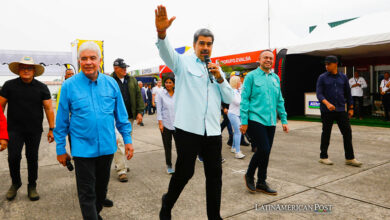A sensory suit: Is it possible to experience humanitarian catastrophes?
Virtual reality will help to deal with humanitarian challenges, thanks to the union between science and social innovation
Today, the world has taken an impressive course with technological advances. Every day, science evolves and, as a result, there are different proposals that assure us a more intelligent society. These will allow the human being to perform with a better dexterity in different social environments. Moreover, the human sciences have been doing an exceptional job and are proposing new ideas to improve the quality of life of people through learning and entrepreneurship.
In this opportunity, science and social innovation come together to develop technological and innovative projects. How is that?
The CBI (Challenge-Based Innovation), an experimental training program, has joined with Non-Governmental Organizations (NGOs) and the European Organization for Nuclear Research (CERN), in order to, on one hand, prepare humanitarian personnel to work in disasters, and on the other hand, to offer refugees the opportunity to prove their academic credentials.
In relation to the first point, this initiative was created because many medical professionals present complications when assisting victims of armed conflicts or natural catastrophes due to the urgency they require. Therefore, they experience situations of stress that, in various cases, mean that humanitarian activities are not satisfactorily fulfilled or performed.
What is the sensorial suit to experience humanitarian catastrophes?
It is important to highight that this project seeks to train professionals. Now, Odgers has been characterized by the creation of augmented reality glasses; however, this time it wanted to go further with the design and implementation of a suit whose function is virtual interaction through touch.
This technology, that is particularly created for next-generation video games, has taken another path, which combines social responsibility and sustainable development. Thus, the suit will transmit countless physiological data such as blood pressure, temperature, heart rate, breathing rate, muscle function, sweating, etc. The suit’s purpose is to train people to adjust to the risk situation and to be able to assess, whether they are ready to take on the challenge in humanitarian conditions.
"There is a big difference between the performance of a professional during a simple exercise and when he disembarks in the field. In this difference, there are lives at stake, "says Odgers. This means that the main objective is to save the human lives that are lost in these contexts. Humanitarian labor is influenced by the critical moment that both victims and rescuers experienced, which also generates great complexities for the effective performance of all activities to help those who are in danger.
Cortex Project
Another project called Cortex, which is under development, consists on helping refugees who are forced to leave their native country because of armed conflicts, leaving behind their identification documents and other certifications.
The idea is that they can access a virtual platform where they can find all their personal and academic data, no matter where they are. A universal database, without the need to carry papers, created with blockchain technology; that is, a static and unlinked network, which has great security, since it does not allow the data entered to be modified.
Finally, there will be no need to carry physical documents, refugees who are linked to this project could obtain their academic records just by putting their fingerprints.
LatinAmerican Post | Brandon Martínez
Copy edited by Marcela Peñaloza






